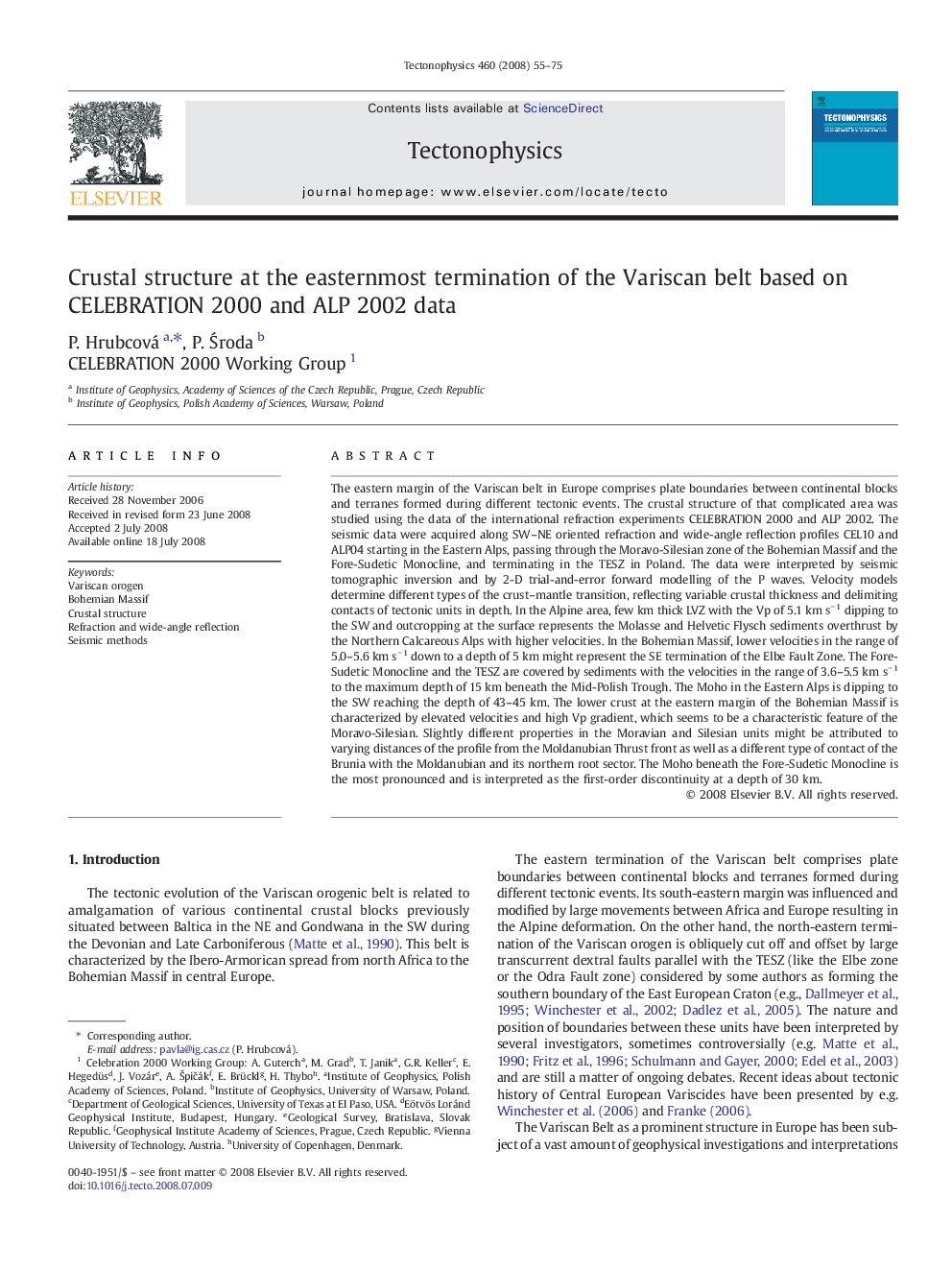| کد مقاله | کد نشریه | سال انتشار | مقاله انگلیسی | نسخه تمام متن |
|---|---|---|---|---|
| 4694277 | 1636905 | 2008 | 21 صفحه PDF | دانلود رایگان |

The eastern margin of the Variscan belt in Europe comprises plate boundaries between continental blocks and terranes formed during different tectonic events. The crustal structure of that complicated area was studied using the data of the international refraction experiments CELEBRATION 2000 and ALP 2002. The seismic data were acquired along SW–NE oriented refraction and wide-angle reflection profiles CEL10 and ALP04 starting in the Eastern Alps, passing through the Moravo-Silesian zone of the Bohemian Massif and the Fore-Sudetic Monocline, and terminating in the TESZ in Poland. The data were interpreted by seismic tomographic inversion and by 2-D trial-and-error forward modelling of the P waves. Velocity models determine different types of the crust–mantle transition, reflecting variable crustal thickness and delimiting contacts of tectonic units in depth. In the Alpine area, few km thick LVZ with the Vp of 5.1 km s− 1 dipping to the SW and outcropping at the surface represents the Molasse and Helvetic Flysch sediments overthrust by the Northern Calcareous Alps with higher velocities. In the Bohemian Massif, lower velocities in the range of 5.0–5.6 km s− 1 down to a depth of 5 km might represent the SE termination of the Elbe Fault Zone. The Fore-Sudetic Monocline and the TESZ are covered by sediments with the velocities in the range of 3.6–5.5 km s− 1 to the maximum depth of 15 km beneath the Mid-Polish Trough. The Moho in the Eastern Alps is dipping to the SW reaching the depth of 43–45 km. The lower crust at the eastern margin of the Bohemian Massif is characterized by elevated velocities and high Vp gradient, which seems to be a characteristic feature of the Moravo-Silesian. Slightly different properties in the Moravian and Silesian units might be attributed to varying distances of the profile from the Moldanubian Thrust front as well as a different type of contact of the Brunia with the Moldanubian and its northern root sector. The Moho beneath the Fore-Sudetic Monocline is the most pronounced and is interpreted as the first-order discontinuity at a depth of 30 km.
Journal: Tectonophysics - Volume 460, Issues 1–4, 15 November 2008, Pages 55–75